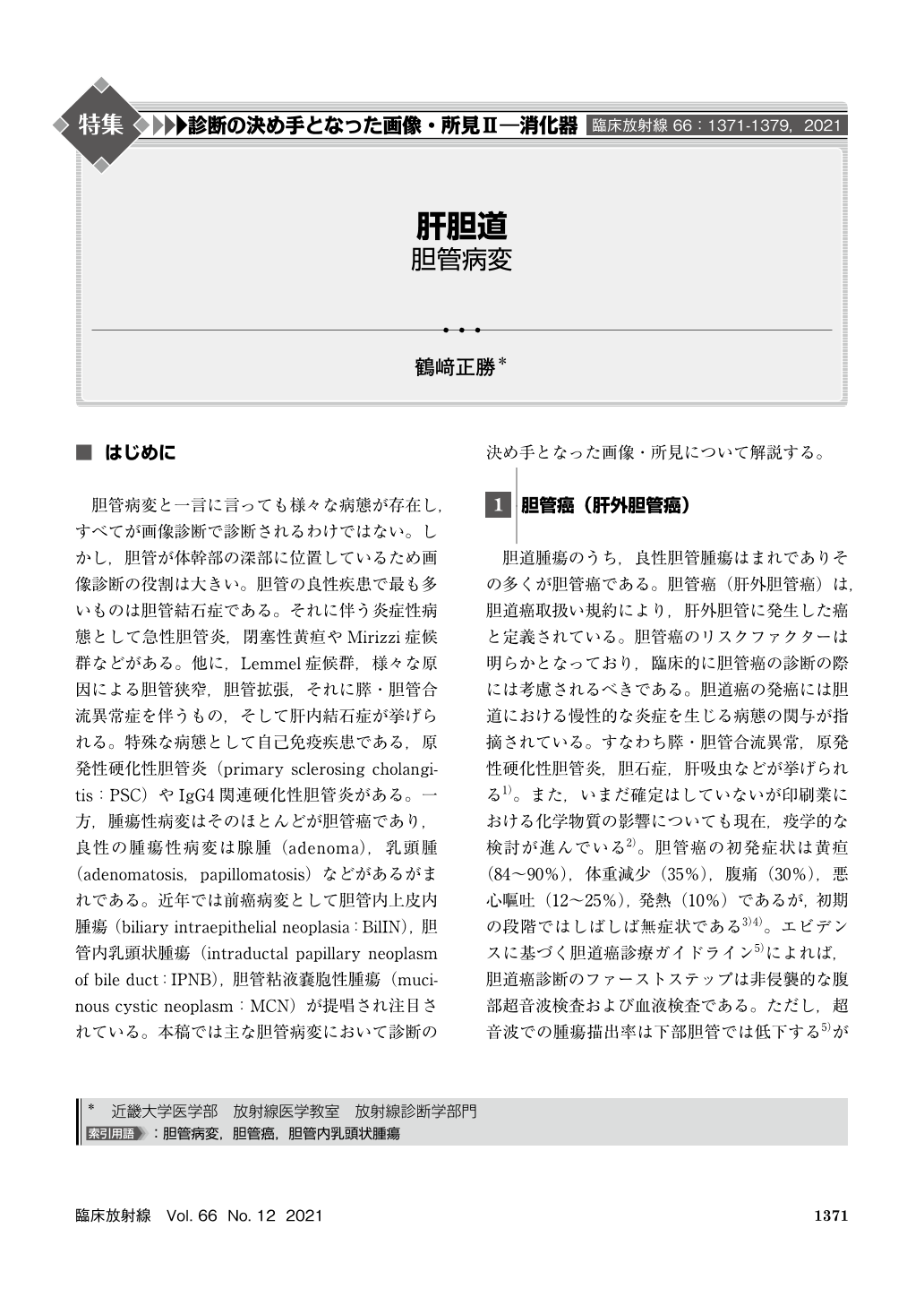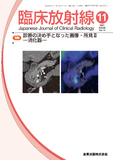Japanese
English
- 有料閲覧
- Abstract 文献概要
- 1ページ目 Look Inside
- 参考文献 Reference
胆管病変と一言に言っても様々な病態が存在し,すべてが画像診断で診断されるわけではない。しかし,胆管が体幹部の深部に位置しているため画像診断の役割は大きい。胆管の良性疾患で最も多いものは胆管結石症である。それに伴う炎症性病態として急性胆管炎,閉塞性黄疸やMirizzi症候群などがある。他に,Lemmel症候群,様々な原因による胆管狭窄,胆管拡張,それに膵・胆管合流異常症を伴うもの,そして肝内結石症が挙げられる。特殊な病態として自己免疫疾患である,原発性硬化性胆管炎(primary sclerosing cholangitis:PSC)やIgG4関連硬化性胆管炎がある。一方,腫瘍性病変はそのほとんどが胆管癌であり,良性の腫瘍性病変は腺腫(adenoma),乳頭腫(adenomatosis,papillomatosis)などがあるがまれである。近年では前癌病変として胆管内上皮内腫瘍(biliary intraepithelial neoplasia:BilIN),胆管内乳頭状腫瘍(intraductal papillary neoplasm of bile duct:IPNB),胆管粘液嚢胞性腫瘍(mucinous cystic neoplasm:MCN)が提唱され注目されている。本稿では主な胆管病変において診断の決め手となった画像・所見について解説する。
Although the survival rate of biliary tract cancer is high in the early stage when curative resection can be expected, the prognosis is poor due to the lack of subjective symptoms and difficulty in early detection. Therefore, diagnostic imaging plays an important role. However, if ultrasonography does not reveal any abnormality, or if ultrasonography is inadequate, CT or MRI(MRCP:magnetic resonance cholangiopancreatography)should be considered. In bile duct cancer, the dilated upstream bile ducts taper toward the hypoechoic mass(tapering)and the upstream bile ducts taper toward a hypoechoic mass(tapering). It is necessary to know the points of differentiation for similar lesions in bile duct cancer, because the treatment strategy may differ greatly depending on the imaging diagnosis.

Copyright © 2021, KANEHARA SHUPPAN Co.LTD. All rights reserved.


